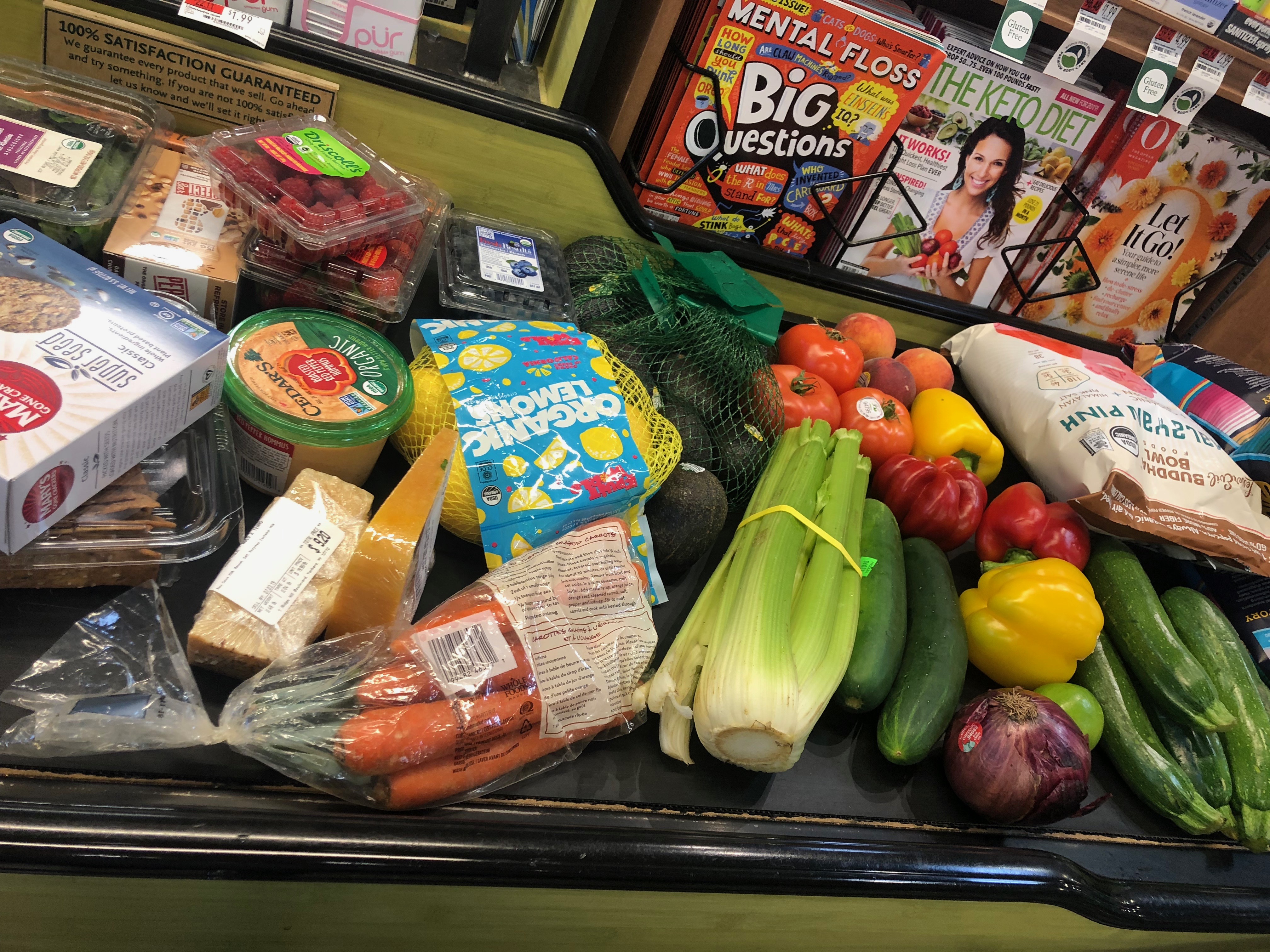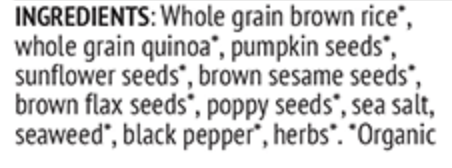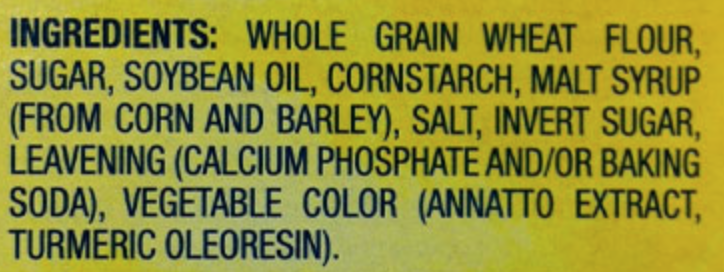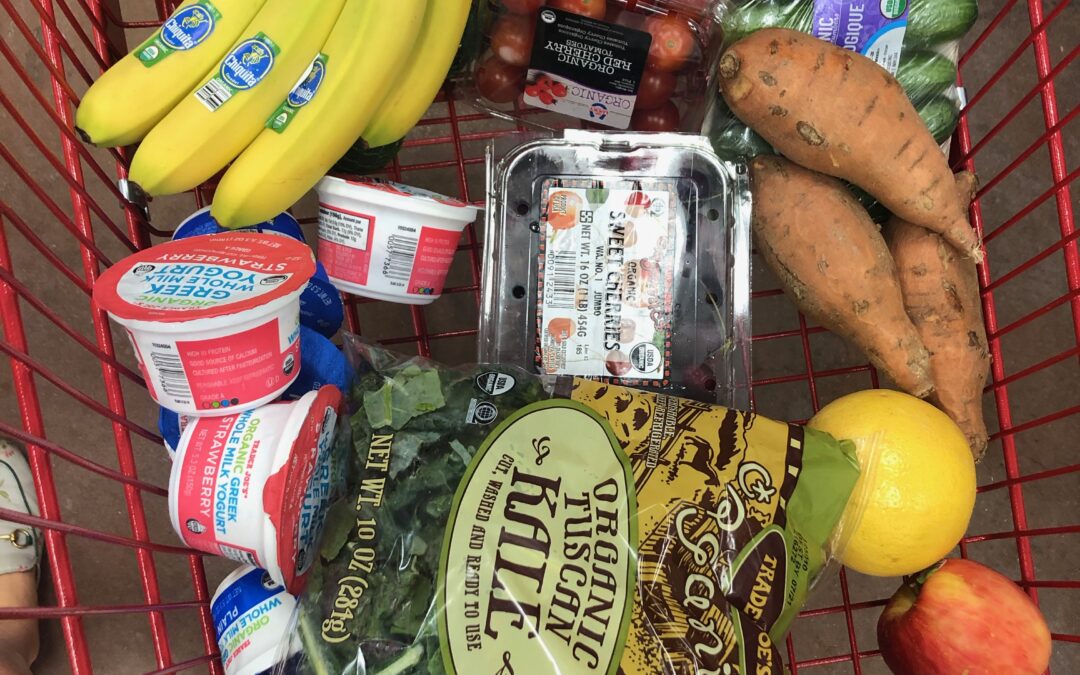Ever feel like you’re buying a ton of stuff that you don’t know what to do with at the grocery store? Or that there are so many products to choose from, that it’s confusing to know what’s the best choice for you and your body? You’re not alone! This is a common concern that I hear from people, and I find that some simple tips help make the trip to the grocery store a little more efficient and a little less stressful.
1. Come with a plan
I’m a big fan of a list. I recommend always going to the store with a focused list of what you need to buy. When you wing it, you’re more likely to forget things and buy things that you don’t really need/won’t end up eating. This doesn’t mean that you can’t improvise a little once you get to the store, but it helps to come prepared.
Another good way of preparing before your shop is to think about your food prep strategy for the week. Are you going to make a couple recipes in bulk and have them for a few days? Or just buy some basics that you can throw together for an easy meal? Or both?! Decide what your food prep plan will look like for the week, write down all of the ingredients from the recipes you will be making (if any), and add them to the list!
2. Fill 75% of your cart with Whole Foods
Full disclosure – 75% is honestly just a number I made up, BUT do try to have more than half of your cart filled with whole-food items that come from Mother Nature (she’s pretty cool, and she knows what she’s doing when it comes to providing us food). Hopefully your shopping list contains foods like: fresh and/or frozen fruits and vegetables, nuts, seeds, legumes, whole grains, proteins (fish, meat, plant-based proteins), oils (avocado and olive are my favorites) and some dairy if you consume dairy. I would aim to have these items comprise the majority of your cart, leaving room for your favorite packaged foods and snacks (crackers, cereals, granolas, popcorn, cookies, frozen prepared foods, etc.).

3. Add some variety
Especially when it comes to produce, it helps to add a little variety into your diet. Try to pick fruits and vegetables of different colors to make sure you are getting a wide variety of vitamins and minerals. Fruits and vegetables of the same color tend to have similar nutrient profiles, so by choosing foods of all different colors, you can make sure you are reaping all of the health benefits that nature has to offer.
Also don’t skip out on fresh herbs and spices when you’re shopping for produce! They are loaded with antioxidants and many of them have antibacterial properties. You can add them to your roasted veggies, pesto, tea, and salad.
4. If you choose to buy organic, prioritize certain items
Buying organic is a personal choice. Organic produce is usually more expensive than conventional, and the research isn’t out on what the long-term health benefits of eating organic are. That being said, organic foods do contain significantly less pesticides and tend to be more nutrient-dense. SO, if you want to buy organic, here are some foods you should prioritize:
1. Oats: oats are sprayed heavily with pesticides and many contain traces of a cancer-causing chemical called glyphosate. In a recent study, organic oats were found to have significantly lower levels of this chemical, and most of them had undetectable levels.
2. Fruits and veggies you eat the skin of
3. Dirty Dozen
Head to ewg.org and see what this year’s most heavily sprayed crops are. It is recommended that you buy these foods organic
4. Foods you eat every day
5. Read your labels!
When I say read your labels, I am really talking about the ingredient list. Yes, it is also important to be aware of how many grams of carb, protein, and fiber are in a food, but I would argue that the ingredient list is the most important thing to look at when shopping for packaged products.
Make sure that the ingredients of your product are SIMPLE. These should be ingredients that you can pronounce and that you recognize.
Look for added sugar. Added sugar can be sneaky, and can be found in products like sweetened beverages, cookies, yogurt, tomato sauce, ketchup, salad dressings, nut milks. and protein bars. I’m not saying you can have zero added sugar, but try to limit the packaged foods you are buying with an abundant amount. A good rule of thumb is to look at the 3 first ingredients of a product. If sugar is one of them, try to find a different brand/option. Here’s a little comparison between a Mary’s Gone Crackers ingredient list and a Wheat thin ingredient list:


As you can see, the Wheat Thin label contains 3 types of sugar (sugar, malt syrup, and invert sugar). The Mary’s gone crackers contains healthy whole grains, seeds, some herbs and spices, and no sugar. These are helpful things to be aware of as we are shoppin
Try these tips out the next time you’re at the store, and let me know how it goes!!
Still feeling confused? I offer guided grocery store trips in Westchester and NYC! We can hit your favorite store and I will give you tips and tricks as we walk through the store. We will go over how to minimize food waste, pick produce, how to pick fresh fish and meat, the best dairy and non-dairy options, label-reading, etc.! The experience is catered to you and your needs, lifestyle, likes/dislikes, and dietary restrictions. To book a tour, simply email me at Leah@leahcohennutrition.com!
